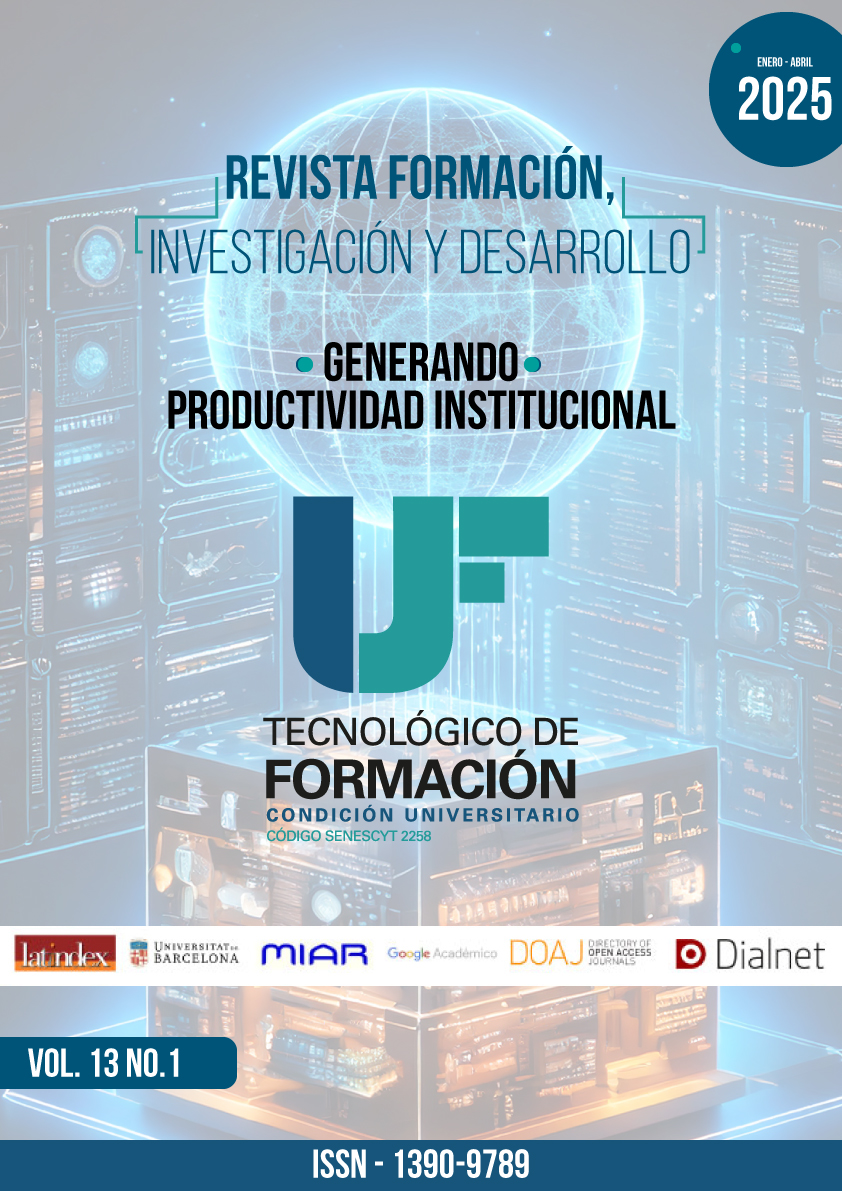Financial KPIs for Evaluating Access to Credit in Ecuadorian SMEs.
Main Article Content
Abstract
Access to credit is fundamental to the sustainability and growth of micro, small, and medium-sized enterprises (MSMEs) in Ecuador. However, these businesses face significant barriers due to strict financial evaluation requirements and a lack of standardized tools to measure their credit performance.
This study aims to develop a KPI-based financial model to facilitate the assessment of access to credit for Ecuadorian MSMEs, employing a documentary approach and the analysis of financial procedure manuals. Sources of financing, credit evaluation methodologies, and key financial indicators for loan approval in the Ecuadorian financial system are examined.
The findings highlight the need for a structured methodology for credit evaluation. As a result, a weighted KPI model is proposed that integrates indicators such as liquidity (30%), debt (20%), profitability (25%), credit history (15%), and operating cash flow (10%). This model seeks to improve transparency in financing processes, optimize credit decision-making, and strengthen the competitiveness of the business sector.
Article Details

This work is licensed under a Creative Commons Attribution-NonCommercial-ShareAlike 4.0 International License.
Este trabajo tiene licencia DE Atribución/Reconocimiento-NoComercial-CompartirIgual 4.0 Internacional. CC BY-NC-SA 4.0.
How to Cite
References
Libros
• Beck, T., & Cull, R. (2021). Banking in Africa: Delivering on Financial Inclusion, Supporting Financial Stability. World Bank Publications. https://openknowledge.worldbank.org/handle/10986/35296
• Berger, A. N., & Udell, G. F. (2022). The Economics of Small Business Finance. Cambridge University Press. https://www.cambridge.org/core/books/economics-of-small-business-finance/3F9A6D7F6C33E927F4D3BB7F59B0476C
• Demirgüç-Kunt, A., Klapper, L., & Singer, D. (2022). The Global Findex Database: Measuring Financial Inclusion. World Bank. https://globalfindex.worldbank.org/
• Mishkin, F. S. (2020). The Economics of Money, Banking, and Financial Markets (13th ed.). Pearson. https://www.pearson.com/en-us/subject-catalog/p/the-economics-of-money-banking-and-financial-markets/P200000008258/9780136893866
• Ross, S. A., Westerfield, R. W., & Jaffe, J. (2023). Corporate Finance (13th ed.). McGraw-Hill. https://www.mheducation.com/highered/product/corporate-finance-ross-westerfield/M9781260772395.html
Artículos de revistas científicas
• Creswell, J. W., & Creswell, J. D. (2023). Advances in Mixed Methods Research: A Systematic Review. International Journal of Research Methods, 17(2), 98-120. https://doi.org/10.1080/19422539.2023.1418944
• Hair, J. F., Hult, G. T. M., Ringle, C. M., & Sarstedt, M. (2021). The use of PLS-SEM in financial modeling. Journal of Business Research, 120(4), 23-45. https://doi.org/10.1016/j.jbusres.2021.04.001
Informes de organizaciones
• Banco Mundial. (2023). Global Financial Development Report 2023: Financial Inclusion for Development. World Bank. https://openknowledge.worldbank.org/entities/publication/236d9f34-193e-5bda-b5d3-1eb3d3519e64
• BID. (2024). Acceso al crédito para MiPymes en América Latina. Banco Interamericano de Desarrollo. https://publications.iadb.org/es/acceso-al-credito-para-mipymes-en-america-latina
• Superintendencia de Bancos del Ecuador. (2023). Reporte anual sobre el sistema financiero ecuatoriano 2023. https://www.superbancos.gob.ec/estadisticas
• CEPAL. (2023). Panorama Económico y Financiero de América Latina 2023. Comisión Económica para América Latina y el Caribe. https://www.cepal.org/es/publicaciones

